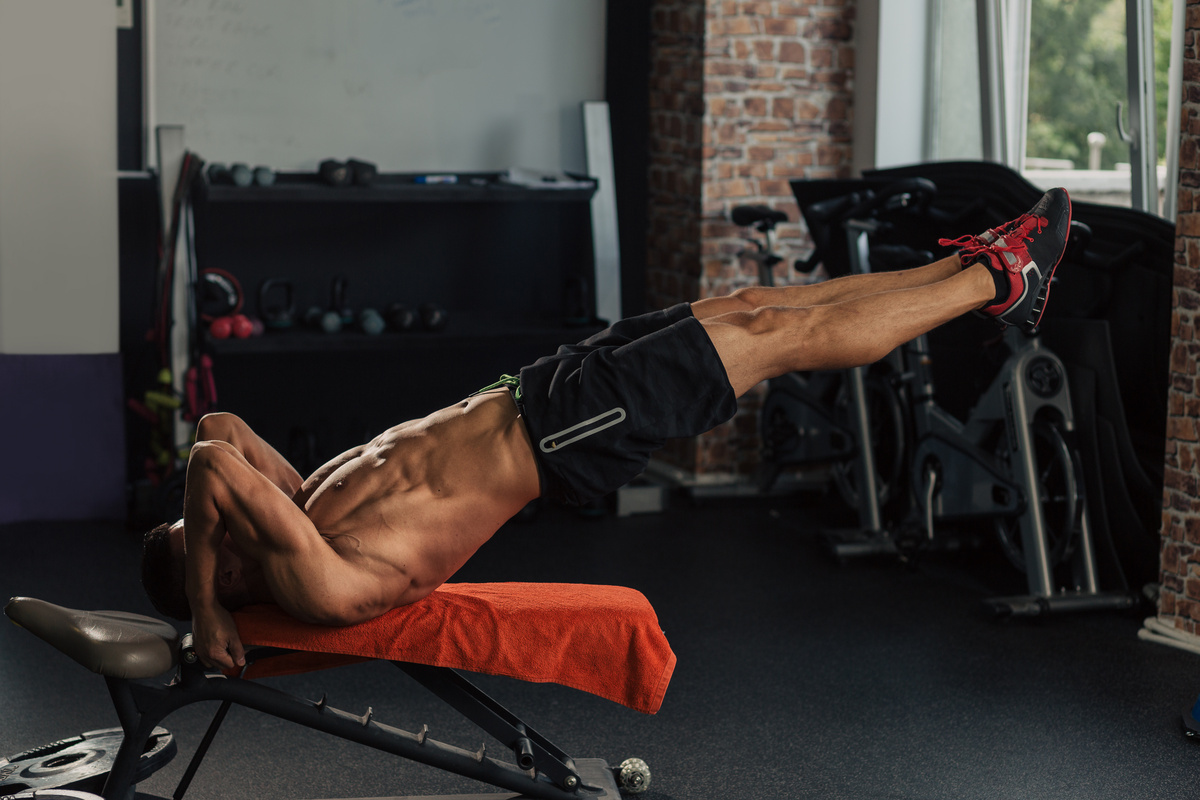
The dragon flag is an exercise that targets the deep core muscles. It involves raising your legs and hips towards the ceiling while keeping your body straight. Because you have to keep your torso and legs straight in this exercise, it is fairly difficult and requires immense core strength.
Nonetheless, don’t be discouraged. Like almost anything else, dragon flags can be perfected through practice. Here, we have made things easier by explaining all the steps to performing a good dragon flag.
What are the benefits of dragon flags?

The most prominent benefit of dragon flags is that they strengthen the core muscles. While dragon flags are a great exercise for the abs, they also work other core muscles, such as the erector spinae and lumbar multifidus.
Don’t worry that these names sound so technical because the main function of the core muscles is simpler — they help to stabilize the body.
The dragon flag exercise forces the core muscles to work against resistance as it puts the body in a very unstable position. This forces the core muscles to stabilize the body, strengthening them at the same time.
Do you need any equipment for dragon flags?

The only piece of equipment you really need for the dragon flag is something sturdy to hold on to while you raise and lower your body through each rep. This sturdy object could be a pole, smith machine, or power rack.
You could also use a strong bench to perform the exercise — one that you’re sure won’t topple over with the instability your weight causes. Additionally, if you’re performing your dragon flag on the ground, an exercise mat would make it more comfortable.
You can perform the dragon flag at home or at the gym, depending on your preferences and options. The functional strength training exercise requires minimal equipment and allows room for improvisation, so you can use what is available to you. So, what is the best technique for performing dragon flags?
How to perform dragon flags

Here’s a simple step-by-step guide to performing dragon flags:
- Lie on a bench or just in front of a sturdy object. Hold the bench or sturdy object just above your head.
- Keep your legs together, flat, and straight.
- Engage your core while lifting your feet and hips towards the ceiling. Try to keep your body straight from your head to your feet. Only your upper back should be in contact with the ground or bench.
- Hold your body up briefly when you reach a near-vertical position.
- Slowly lower your body back to the starting position without letting your back or legs touch the bench.
- Repeat the movement as many times as you can, depending on your fitness level.
Things to avoid with the dragon flag exercise

The dragon flag is a fairly difficult exercise to execute. Avoiding the following, however, are good cues to ensure proper form and execution:
- Arching your back. You should keep your back straight throughout the movement. Tighten your glutes as you go up and down. This will help prevent your back from arching.
- Bending the knees or hips: Keeping your hips and knees straight is also important for the dragon flag, as doing the opposite will take some tension away from the core.
- Quick movements: Quick, jerky movements during the dragon flag may cause you to lose form. In this exercise, the body is highly unstable, so the reps must be slow and controlled.
- Not holding down your shoulders and arms with a sturdy object: You need a sturdy object behind you to keep your arms, shoulder, and upper back stable through each rep. This will allow you to focus on using your core to raise and lower the rest of your body.
How often should you do dragon flags?

A meta-analysis that examined the effectiveness of training the core for athletic performance suggests doing a core workout more than twice a week. While this is a good recommendation, your workout schedule and recovery are some of the most important determiners of how often you should do dragon flags.
After training, it is essential to eat right and rest properly so that you can recover in time for your next training session. Dragon flags are intense, but they are not the only intense exercise you’d perform in a good training program. So, to avoid fatigue and injury, rest days are essential.
Nonetheless, if you’re new to dragon flags, twice a week is a great spot to begin. Depending on how you like the exercise and how quickly you recover, you can increase training frequency as time goes on.



